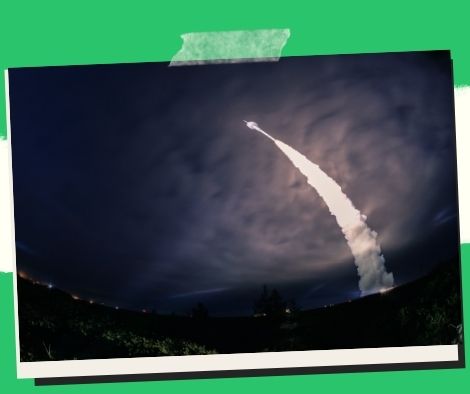
Japan and the US are collaborating on research to combat hypersonic missiles.
In an effort to closely coordinate their national security objectives in light of China’s increasing aggressiveness in the region, the US and Japanese defense chiefs decided on Wednesday that their countries will conduct joint technological development to resist hypersonic weapons.
Yasukazu Hamada, the new Japanese defense minister, and Lloyd Austin, his American counterpart, met at the Pentagon for the first time since Hamada’s appointment last month. The talks took place at a time of heightened tensions surrounding Taiwan following Speaker of the US House of Representatives Nancy Pelosi’s recent visit to the self-governing island.
Austin opened the meeting by declaring, apparently about China’s increased military activities in response to the high-profile US visit to Taiwan in early August, that “China’s coercive actions in the Taiwan Strait and in the waters surrounding Japan are provocative, destabilizing, and unprecedented.”
According to the Japanese Defense Ministry, Hamada and Austin also harshly criticized China’s last month’s launch of ballistic missiles as part of extensive exercises near Taiwan, some of which landed in Japan’s exclusive economic zone, as a “serious” incident that affected Japan’s security and the safety of the general public.
According to the ministry, “the two ministers agreed that a unilateral change in the status quo by force is unacceptable in the Indo-Pacific area.” They declared that their nations would “cooperate closely and seamlessly” to thwart such attempts.
Hamada and Austin agreed to make “concrete” measures to strengthen the bilateral security partnership where they can while making it apparent that their security strategies are in sync.
Amid an escalating arms race with China and Russia, the technology to fight against hypersonic missiles is among the areas.
Weapons that travel at speeds greater than five times the speed of sound are called hypersonic weapons. They can maneuver en route to the target and fly at lower altitudes than conventional ballistic missiles, making detection and defense against them difficult.
A representative of the Japanese government stated that the technologies and elements required for creating missiles capable of intercepting hypersonic weapons would be the main focus of the anticipated cooperative study.
The US military’s MQ-9 reconnaissance drones will be temporarily stationed at a Japanese Maritime Self-Defense Force air base in the southwestern prefecture of Kagoshima. The two nations have also agreed to work together to study the data they will gather.
The reform of its national security documents and a significant increase in its defense budget are both planned, according to Hamada, who stated during the meetings that Japan is determined to strengthen its defense capabilities fundamentally.
Hamada said Austin expressed “strong” support for Japan’s strategy.
The ability to target missile-launching facilities on the hostile territory is one of the defense capabilities that Japan is now looking into, although the Asian nation has so far chosen not to under the post-World War II pacifist Constitution.
By the end of the year, Japan intends to amend its national security strategy to reflect the region’s increasingly difficult security climate. The long-term security and diplomacy strategy guideline would change since its adoption in 2013.
The US Defense Department issued an outline of its own National Defense Strategy in March, referring to China as its “most significant strategic opponent” and pledging to give China’s concerns priority over Russia’s.
China regards Taiwan as a separatist province that should be united with the mainland, if necessary, through force. The island is considered a possible military flashpoint that might ignite a war between China and the United States.
Given the closeness of Japan’s islands in the southwest, notably the Senkakus—a collection of East China Sea islets that Tokyo controls but Beijing claims—a Taiwan contingency is also of great concern to Japan.
Austin reaffirmed the “unwavering” commitment of the US to the defense of Japan, including the “full range” of US nuclear and conventional defense weapons to support extended deterrence.
He also reaffirmed the US position that the Senkaku Islands, also known as Diaoyu by China, are covered by the Japan-US Security Treaty, indicating that Washington would support Tokyo in an armed strike against the uninhabited islets.
Save/Share this story with QR CODE
Disclaimer
This article is for informational purposes only and does not constitute endorsement of any specific technologies or methodologies and financial advice or endorsement of any specific products or services.
📩 Need to get in touch?
📩 Feel free to Contact NextGenDay.com for comments, suggestions, reviews, or anything else.
We appreciate your reading. 😊Simple Ways To Say Thanks & Support Us:
1.) ❤️GIVE A TIP. Send a small donation thru Paypal😊❤️
Your DONATION will be used to fund and maintain NEXTGENDAY.com
Subscribers in the Philippines can make donations to mobile number 0917 906 3081, thru GCash.
3.) 🛒 BUY or SIGN UP to our AFFILIATE PARTNERS.
4.) 👍 Give this news article a THUMBS UP, and Leave a Comment (at Least Five Words).
AFFILIATE PARTNERS

World Class Nutritional Supplements - Buy Highest Quality Products, Purest Most Healthy Ingredients, Direct to your Door! Up to 90% OFF.
Join LiveGood Today - A company created to satisfy the world's most demanding leaders and entrepreneurs, with the best compensation plan today.



 Business Technology, Finance Technology & Information Technology
Business Technology, Finance Technology & Information Technology





